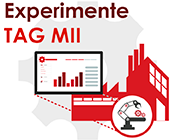How to Integrate Enterprise Systems and an MES Using SAP MII
Learn how to develop a composite application in SAP Manufacturing Integration and Intelligence (SAP MII) by mashing up data from ERP and a manufacturing execution system (MES). See how to leverage message services and business logic services for ERP and MES integration.

SAP Manufacturing Integration and Intelligence (SAP MII)
How?
The actual process parameters and execution information are captured in various legacy real-time systems such as Plant Historian or legacy databases. This end-to-end scenario shows how to receive production order data from SAP ERP, send it to a manufacturing execution system (MES), and update the actuals and confirmations in ERP upon receiving confirmations from the MES or through user interfaces. It includes the use of Message Services in SAP Manufacturing Integration and Intelligence (SAP MII) with its Quality of Service (QoS) and processing rule features and Business Logic Services (BLS).
MES Background
One of the key requirements for manufacturing execution data management is transferring the manufacturing orders and other relevant data from ERP to the MES, as well as getting the confirmations and actual data from the MES and other legacy applications used in the manufacturing shop floor, to update in ERP.Most of the MES applications being delivered by different IT vendors are based on different data models and technology platforms. That means the information is not always seamlessly integrated out of the box with any ERP application. A typical MES application may need information from the ERP system, such as material master data, material classification, bill of material (BOM), routings, resource and equipment master, as well as transactional data, such as production orders and inventory, to manage the production process at the shop floor. Each of these details may come from the ERP application via different interfaces and at different intervals. For some of the interfaces, a strict sequence also may need to be maintained while sending the data to the MES. For example, before sending the production orders from ERP to the MES, you need to ensure that all the materials and work centers used in the production order are already sent to the MES application. Without the materials and work center information, the order may not be processed and the information is not displayed to the user for execution.
The interface format for ERP and the MES may often be different, which requires a transformation of the data fields while exchanging the information. To standardize the MES interfaces, often industry standards such as ISA95-B2MML-based interfaces are used so that the same interface format can be reused. Because an ERP application may not natively support B2MML interfaces or an MES-specific interface format, the mapping between the ERP interface formats to the MES interface format and vice versa should be done before transferring to the target system.









